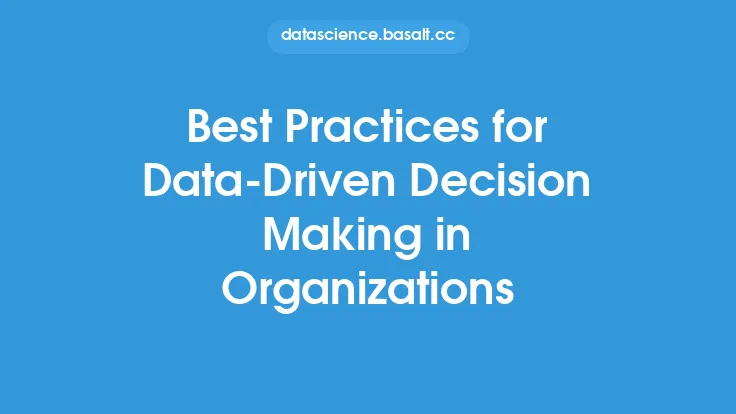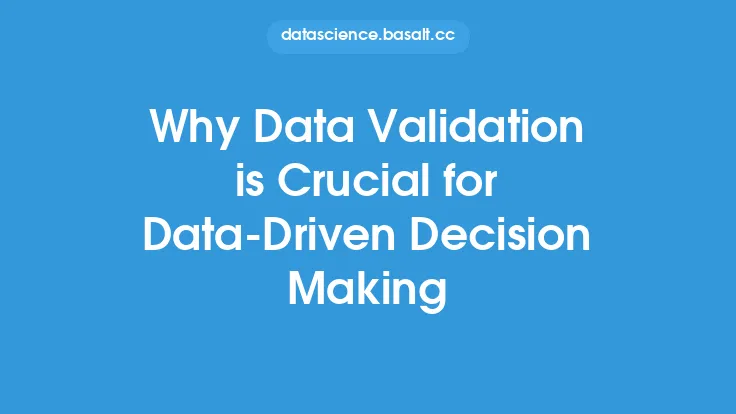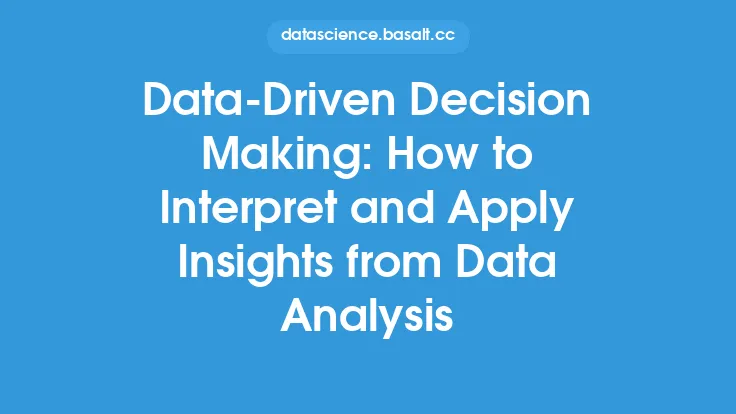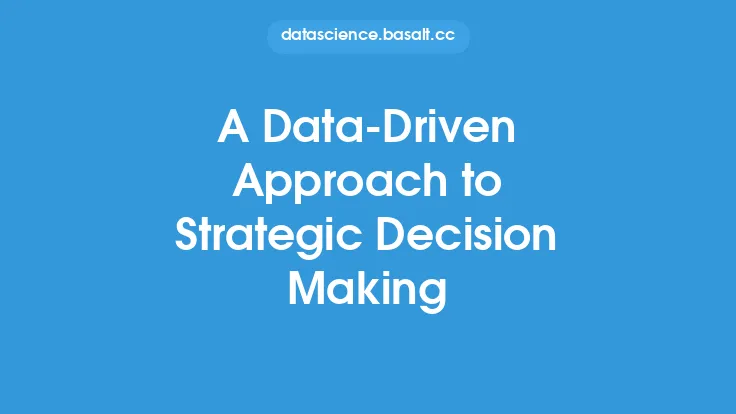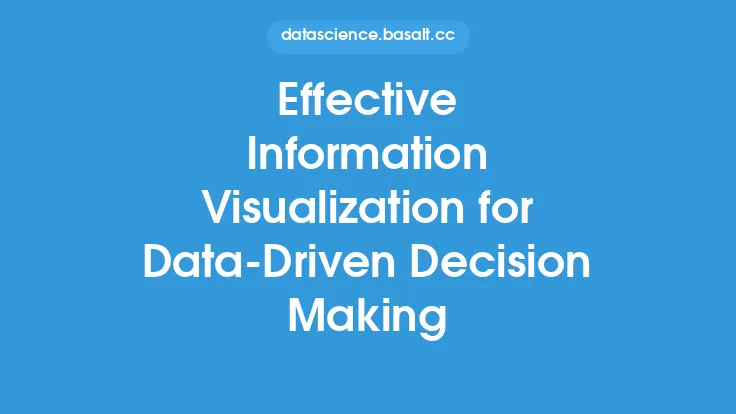Data cleansing is a critical process in data quality management that involves identifying, correcting, and transforming inaccurate, incomplete, or inconsistent data into a more reliable and usable format. The goal of data cleansing is to ensure that data is accurate, complete, and consistent, which is essential for making informed, data-driven decisions. In this article, we will discuss the best practices for data cleansing to enhance data-driven decision making.
Introduction to Data Cleansing Best Practices
Data cleansing best practices are guidelines that help organizations to effectively clean and preprocess their data, ensuring that it is of high quality and suitable for analysis. These best practices include data profiling, data validation, data normalization, data transformation, and data quality monitoring. By following these best practices, organizations can ensure that their data is accurate, complete, and consistent, which is essential for making informed decisions.
Data Profiling and Analysis
Data profiling and analysis is the first step in the data cleansing process. It involves analyzing the data to identify patterns, trends, and correlations, as well as to detect errors, inconsistencies, and missing values. Data profiling tools can be used to analyze the data and provide insights into its quality and structure. This step is critical in identifying the types of errors and inconsistencies that exist in the data, which can then be addressed through data cleansing techniques.
Data Validation and Verification
Data validation and verification is the process of checking the data against a set of predefined rules and constraints to ensure that it is accurate and consistent. This can include checks for data format, data range, and data consistency, as well as verification against external data sources. Data validation and verification can be performed using a variety of techniques, including data validation rules, data verification algorithms, and data quality metrics.
Data Normalization and Transformation
Data normalization and transformation is the process of transforming the data into a standard format to ensure that it is consistent and comparable. This can include techniques such as data aggregation, data disaggregation, and data normalization, as well as data transformation techniques such as data encoding and data decoding. Data normalization and transformation can help to improve the quality and consistency of the data, making it more suitable for analysis.
Data Quality Monitoring and Maintenance
Data quality monitoring and maintenance is the process of continuously monitoring the data for errors, inconsistencies, and changes, and performing maintenance tasks to ensure that the data remains accurate and up-to-date. This can include tasks such as data backup and recovery, data archiving, and data purging, as well as data quality metrics and reporting. Data quality monitoring and maintenance is critical in ensuring that the data remains accurate and reliable over time.
Data Cleansing Tools and Technologies
There are a variety of data cleansing tools and technologies available, including data profiling tools, data validation tools, data transformation tools, and data quality monitoring tools. These tools can help to automate the data cleansing process, improving efficiency and effectiveness. Some popular data cleansing tools and technologies include data quality software, data integration software, and data governance software.
Data Governance and Compliance
Data governance and compliance is the process of ensuring that the data is managed and used in accordance with organizational policies and regulatory requirements. This can include tasks such as data access control, data security, and data privacy, as well as compliance with regulations such as GDPR and HIPAA. Data governance and compliance is critical in ensuring that the data is used responsibly and in accordance with organizational policies and regulatory requirements.
Best Practices for Data Cleansing
Some best practices for data cleansing include:
- Develop a data quality strategy that outlines the goals and objectives of the data cleansing process
- Establish data quality metrics and benchmarks to measure the effectiveness of the data cleansing process
- Use data profiling and analysis to identify errors, inconsistencies, and missing values
- Use data validation and verification to ensure that the data is accurate and consistent
- Use data normalization and transformation to transform the data into a standard format
- Continuously monitor the data for errors, inconsistencies, and changes, and perform maintenance tasks to ensure that the data remains accurate and up-to-date
- Use data cleansing tools and technologies to automate the data cleansing process
- Ensure that the data is managed and used in accordance with organizational policies and regulatory requirements.
Conclusion
In conclusion, data cleansing is a critical process in data quality management that involves identifying, correcting, and transforming inaccurate, incomplete, or inconsistent data into a more reliable and usable format. By following best practices for data cleansing, organizations can ensure that their data is accurate, complete, and consistent, which is essential for making informed, data-driven decisions. Some best practices for data cleansing include developing a data quality strategy, establishing data quality metrics and benchmarks, using data profiling and analysis, using data validation and verification, using data normalization and transformation, continuously monitoring the data, using data cleansing tools and technologies, and ensuring that the data is managed and used in accordance with organizational policies and regulatory requirements.
